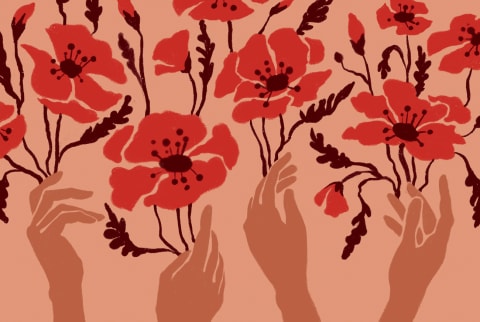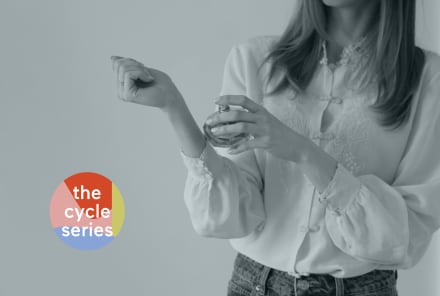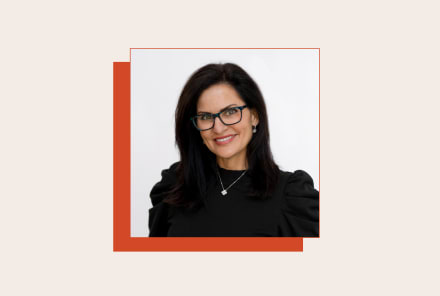Advertisement
How Being A Death Doula Changed My Perspective On Living


Eight-hour grief-tending rituals, meetings on end-of-life choices, planned deaths, in-home massages with hospice clients, and reiki with those who are grieving. I also have dance, writing, meditation, dinner with friends, and hiking on the schedule. But this is not far off from a regular week.
It's an enriching life. I'm a massage therapist with dying and grieving people. I also act as a death doula for those who choose to use the Death With Dignity Act in Oregon. Much of my work is holding space for the natural process of dying and of family members supporting their person throughout the process.
Why'd I choose this job?
I work in the slippery depths of sorrow that we try so hard to avoid and hide away from. I also work in the most beautiful, pure moments of kindness and unimaginable love.
I am an observer and carrier of dualistic truth. We cannot experience pleasure without the ability to experience pain. And we cannot fully love until we feel the power of losing that love.
"You're such a happy person, why do you work with dying people?" my mom asked me over the phone.
My dad is more willing to engage in the topic, but I'm pretty sure he won't let me wash and shroud his body. He'd prefer we pay a professional, as many of us do—but I'm still hopeful.
People often ask, "Do you work with people who aren't dying, too?" The answer is no. Not because I don't care for the younger and healthier among us but because we're all dying.
Working with dying people allows me to understand the reality of my own mortality. Major themes I've explored through my meditation practice are handed to me over and over again through my work. These lessons are essential in the aging and dying process:
Love and loss are inseparable.
Beauty and tragedy live because of each other, not in spite of each other. I am reminded of this as I walk into my client's home. There is much more family than normal. My heart is warmed by this. I turn to my client, lying back in her hospital bed, eyes closed, with an aunt holding her hand. The space has changed dramatically. The family offers me coffee or beer. They are camping out here for the long haul. They report to me that she hasn't eaten in four days or opened her eyes—they have been informed that she is transitioning.
The beauty of this moment where I offer reiki at the bedside, across from a harp player, surrounded by 13 family members is hard to grasp. This tragic passing of a woman, a mother, a grandmother, a wife, a sister, much too young. The beauty of her face, lit by the sunshine and the early cherry blossoms outside her window. Her daughter crying out, being comforted by a sister with a tiny toddler. It's magic, it's painful, it's life and dying. It's chaos.
It's not enough to care for other people. I have to trust them enough to care for me.
My ability to hold and care for others is directly related to my ability to be held fully by others. This means self-care and deep work on vulnerability. It's very comfortable to be a caretaker of others. This allows me a position of strength, of helping. It does not ask me to show my weakness, my humanness, my brokenness, my fear. In my ability to access these parts of myself, I can more naturally support and understand those I serve.
Everything is impermanent.
As someone who identifies strongly with Buddhism, the idea of impermanence is one that resonates deeply with me. It is something I try to bring into my daily life and explore vulnerably.
Working with dying people means I am constantly confronting the idea of impermanence. I will go into a planned death with a family and a client who is ready to say goodbye. I support that client and the family, and then I retire to my own care (usually a long hike).
When I leave these scenarios and see otherwise mundane things, like a voicemail from my father, I recognize it could be the last message he ever sends me. This allows me to embody the magic of small moments, accepting that they're temporary, but also bring great joy.
There is power in being a witness.
As a complete stranger walking into the situation, I am able to see someone for exactly who they are in this moment. I have no idea who they were before, so I can't dwell on what they have lost or wish they had something different. I get to meet them completely, see them completely—it's a beautiful way to hold someone.
The act of witnessing helps me do the same in my daily life. I allow my friends and family to show up exactly as they are, in this moment, without wishing they or the situation were different.
The biggest take-away.
Working with dying people is a way to experience the full nature of being human. Tending to anxiety, fear, and loneliness is a way to see how resilient, beautiful, strong, and inspiring people are.
It's a way to notice each other and to learn from our elders. It's a way to see and hear stories from others that deserve to be shared. It's a face of humanity that needs to be seen and needs to be held.
Watch Next
Enjoy some of our favorite clips from classes
Enjoy some of our favorite clips from classes
What Is Meditation?
Mindfulness/Spirituality | Light Watkins
Box Breathing
Mindfulness/Spirituality | Gwen Dittmar
What Breathwork Can Address
Mindfulness/Spirituality | Gwen Dittmar
The 8 Limbs of Yoga - What is Asana?
Yoga | Caley Alyssa
Two Standing Postures to Open Up Tight Hips
Yoga | Caley Alyssa
How Plants Can Optimize Athletic Performance
Nutrition | Rich Roll
What to Eat Before a Workout
Nutrition | Rich Roll
How Ayurveda Helps Us Navigate Modern Life
Nutrition | Sahara Rose
Messages About Love & Relationships
Love & Relationships | Esther Perel
Love Languages
Love & Relationships | Esther Perel

















